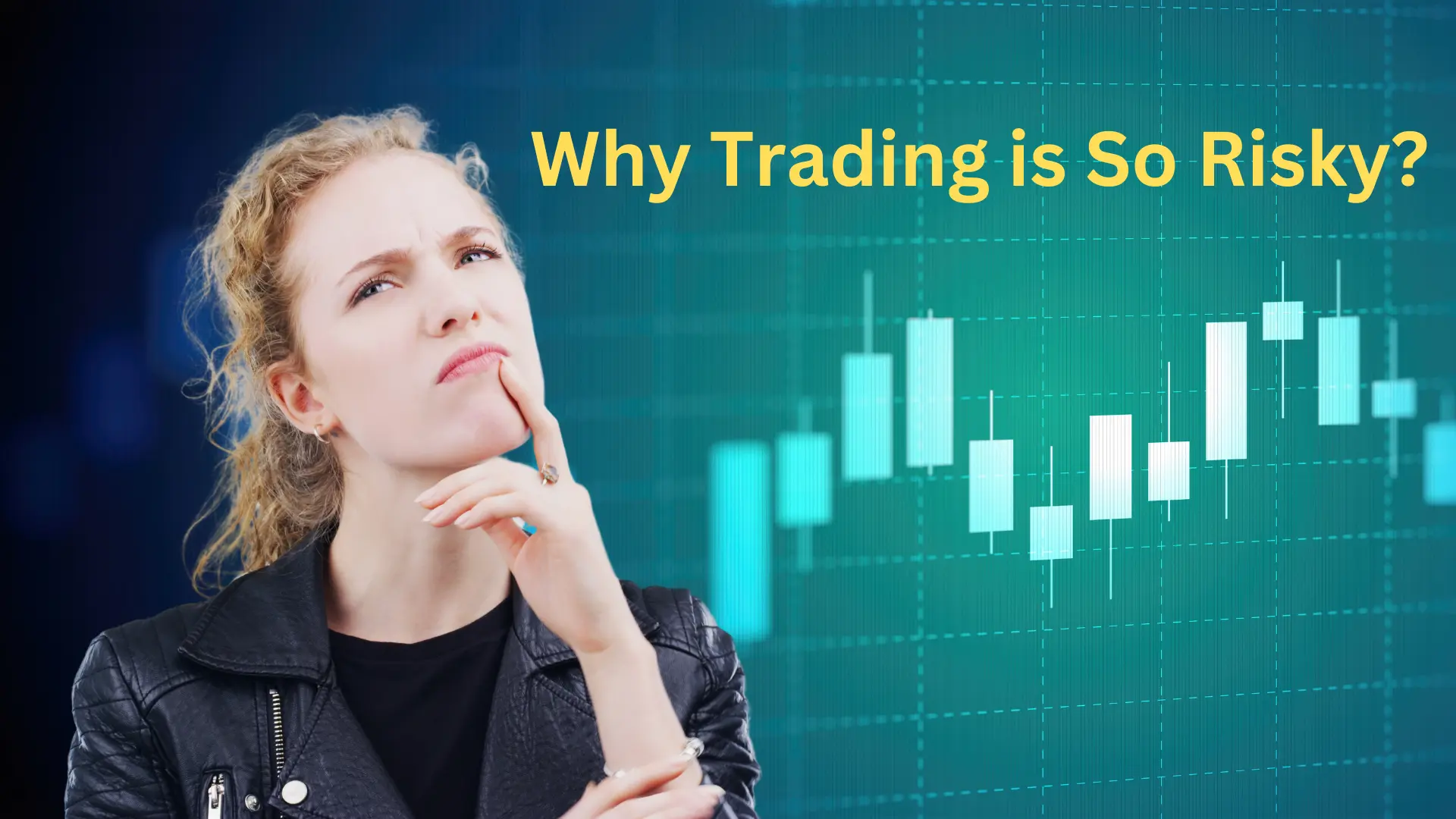Why Trading is So Risky?
Trading, the practice of buying and selling financial assets like stocks, currencies, or commodities, can offer the potential for substantial profits. However, it is also inherently risky. The risk associated with trading stems from various factors, including market volatility, emotional decision-making, leverage, and the complexity of financial markets. Here’s a closer look at why trading is considered so risky:

1. Market Volatility
Unpredictable Price Movements: Financial markets are inherently volatile, with prices fluctuating frequently due to various factors such as economic data releases, geopolitical events, company news, and changes in market sentiment. Traders attempt to profit from these price movements, but the same volatility that creates opportunities also introduces significant risk. A sudden adverse price movement can lead to substantial losses.
Rapid Changes: In trading, prices can change rapidly, sometimes within seconds. This requires traders to make quick decisions, often with incomplete information. The speed at which prices can move adds a layer of complexity and risk, as even a small delay in executing a trade can result in a less favorable outcome.
2. Use of Leverage
Magnified Gains and Losses: Leverage allows traders to control a large position with a relatively small amount of capital. While leverage can amplify profits, it also magnifies losses. A small adverse price movement can result in a loss that exceeds the trader’s initial investment, leading to significant financial harm.
Margin Calls: When trading on margin, traders borrow money from their broker to increase their buying power. However, if the value of the trader’s position drops below a certain level, the broker may issue a margin call, requiring the trader to deposit additional funds. If the trader cannot meet the margin call, the broker may liquidate the trader’s position at a loss, potentially wiping out their account.
3. Emotional Decision-Making
Psychological Stress: Trading can be highly stressful, especially when large sums of money are at stake. The pressure to make quick decisions can lead to emotional responses such as fear, greed, and panic. These emotions can cause traders to deviate from their strategy, making impulsive decisions that increase risk.
Overtrading: The desire to recover losses or chase after potential profits can lead to overtrading, where a trader places too many trades in a short period. Overtrading increases transaction costs and exposes the trader to greater risk, often leading to further losses.

4. Complexity of Financial Markets
Market Knowledge and Expertise: Successful trading requires a deep understanding of financial markets, including technical analysis, market indicators, and the factors that influence price movements. Novice traders may lack the necessary knowledge and skills, making them more susceptible to losses.
Sophisticated Market Participants: Financial markets are populated by a wide range of participants, including institutional investors, hedge funds, and professional traders. These participants often have access to better information, advanced trading algorithms, and larger capital reserves, giving them an advantage over retail traders. Competing in such an environment can be challenging and risky for individual traders.
5. Liquidity Risk
Difficulty Executing Trades: Liquidity refers to the ease with which an asset can be bought or sold without affecting its price. In highly liquid markets, traders can execute trades quickly at their desired price. However, in less liquid markets or during periods of high volatility, finding a buyer or seller at the expected price can be difficult. This can lead to slippage, where a trade is executed at a less favorable price, increasing the risk of loss.
Market Gaps: A market gap occurs when the price of an asset jumps from one level to another, skipping several price points in between. This can happen due to after-hours news or economic events. Gaps can result in significant losses, particularly if a stop-loss order (an order to sell a security when it reaches a certain price) is bypassed due to the gap.

6. Short-Term Focus
Chasing Short-Term Gains: Trading is often focused on short-term gains, requiring traders to constantly monitor the market and react to price movements. This short-term focus can lead to a higher frequency of trades and a greater exposure to risk. Unlike long-term investors who can ride out market fluctuations, traders must deal with immediate market reactions, which can be unpredictable and costly.
Time Pressure: The need to make quick decisions in trading can lead to mistakes and misjudgments. The pressure to act quickly can result in entering or exiting trades at the wrong time, amplifying the potential for loss.
7. Lack of Control Over External Factors
Unforeseen Events: Financial markets are influenced by a wide range of external factors, including economic data releases, political events, natural disasters, and changes in government policy. These events can cause sudden and significant market movements that are difficult to predict or control, leading to unexpected losses.
News and Rumors: Markets can be highly sensitive to news and rumors, which can cause prices to spike or plummet in a short period. Traders who react to this information without verifying its accuracy or assessing its impact may make poor decisions, resulting in losses.
Conclusion
Trading is inherently risky due to the volatile nature of financial markets, the use of leverage, the psychological challenges involved, and the complexity of market dynamics. While trading offers the potential for high returns, it also carries the risk of substantial losses. Successful traders must possess a strong understanding of the markets, maintain emotional discipline, and implement effective risk management strategies. For those who are not fully prepared for the risks involved, trading can lead to significant financial setbacks.